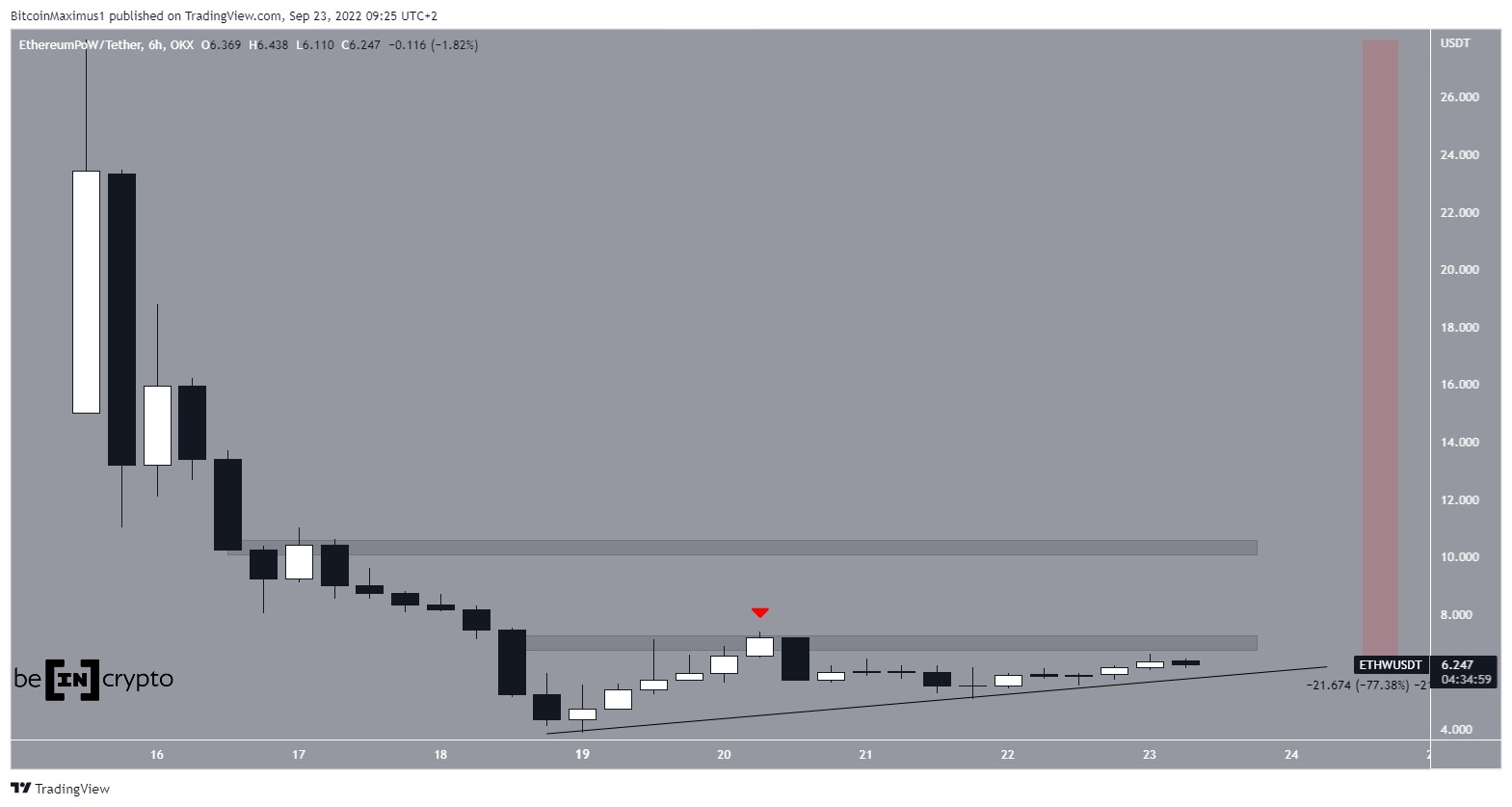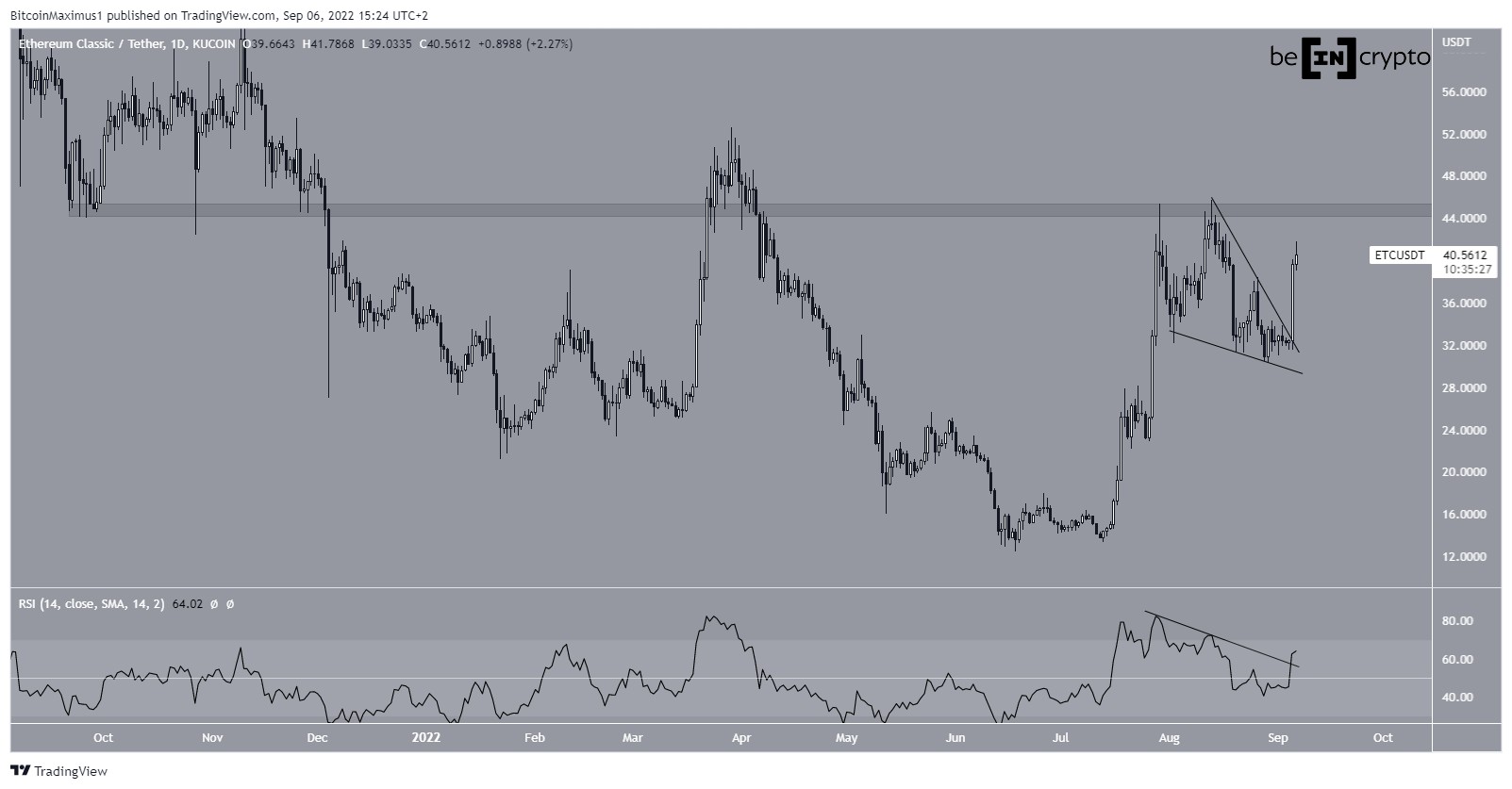
2018-11-9 17:19 |
What Is Ethereum Classic?
Ethereum Classic ETC is an Ethereum hard fork created to preserve the original Ethereum coding after The Decentralized Autonomous Organization (The DAO, an Ethereum-based project) was hacked. It caused a loss of over 6.2 million Ether and crippling decentralized application development. At block 1920000, Ethereum mining nodes were forked to return the stolen Ether, and the minority that continued running the original hacked ledger created Ethereum Classic.
This makes ETC similar to Bitcoin forks like Bitcoin Cash in that its value will forever be tied to Ethereum, regardless of each project’s philosophical or technical differences down the line. It’s also not the only Ethereum fork, which include EtherZero, EthereumFog, Ether Gold, and EtherInc.
And the upcoming Ethereum Casper update to Proof of Stake mining will almost certainly create another fork. ASIC mining companies like Bitmain, dApp projects like Cryptokitties, and even competitors like EOS ultimately depend on Ethereum.
These simultaneous blockchain versions running can be seen similar to Microsoft supporting versions of its Windows OS all the way back to the original in special cases (such as satellites and equipment launched into space during those eras). In this context, having multiple versions running is a great toolkit for developers and users alike and expands on the Ethereum Foundation’s initial promise of a blockchain-based future.
Before explaining the saga of how Ethereum Classic was created, let’s review ETC’s financial performance on the cryptocurrency market.
ETC Crypto Market PerformanceETC’s peak price so far was $45.98, which occured on January 14, 2018. As of November 8, 2018, the circulating supply is 105,884,447 ETC. Although Ethereum has no maximum supply, ETC does have a max of approximately 210,000,000 as of ECIP-1017.
ETC is mined using a Proof-of-Work algorithm. Its initial creation is an epic story that’ll be explained in more detail below, but what’s important to know is the 2016 hack of The DAO created a split at block 1920000. Any ETH held at that point was awarded ETC, whereas the stolen ETH, which was converted to DAO was converted back to ETH at a rate of 100 DAO/1 ETH.
Over $122 million worth of ETC is traded on a daily basis. Because most markets already supported ETH at the time of the fork, many still support ETC, including Bithumb, Coinbit, EXX, OKEx, RightBTC, Huobi, Binance, and many more. ETC trading pairs include ETH, BTC, USDT, XRP, and fiat currencies like USD and EUR. It remains in circulation because it’s so easily traded.
Its ETH heritage also helps with ETC wallet available. ETC-compatible wallets include Ledger Nano S (Hardware), Jaxx (multiplatform), Coinomi (mobile), and ClassicEtherWallet (Web).
So if ETC benefits so much from its Ethereum association (even though the Ethereum Foundation and the rest of the founding team largely chose ETH over ETC), why does ETC’s community support it so fervently?
The answer is philosophical, and man’s philosophy overrides a lot of other virtues, morals, and ethics. Let’s review the background of this battle over the immutability of the blockchain ledger.
How The DAO Hack Split the Biggest Blockchain CommunityBecause it was first to market with a blockchain-based smart contract platform, the Ethereum Foundation, led by Vitalik Buterin, had to cover a lot of ground to jumpstart dApp development. The proprietary Solidity programming language had to be learned and adapted for use with other languages. Real value and ROI needed to be shown. Ethereum is known today as a popular ICO platform, but to get there, it needed to create a project to show proof of concept. The DAO raised $150 million worth of ETH to fund these projects. This ETH supply was converted to DAO, the proprietary Ethereum-based token created for The DAO.
Unfortunately, over $50 million of it was illegally drained during a June 2016 hacker exploit of the DAO-ETH exchange system. Ethereum’s price plummeted in the aftermath, and the hard fork was proposed to prevent the Denial of Service (DoS) attack that could result from a soft fork.
The purpose of the fork was to return the DAO money to its rightful owners at a rate of 100 DAO to 1 ETH. While the majority of the community agreed with this method of saving face, some protested changing the ledger. The integrity and immutability of the decentralized ledger is what made the blockchain so attractive to some. This fork went against their philosophical beliefs, so some nodes refused the update.
On a philosophical level, the difference between ETC and ETH is that ETC represents a belief in truth, while ETH represents a belief in justice. Both have a place, but they’re both also facing massive competition from more advanced blockchain projects. Developers are using it, however, so Ethereum Classic is neither vaporware nor a ghost town. It also has technical support from the community and developers providing open-source updates.
Not only does ETC preserve many of Ethereum’s early projects, it also has backing from cryptocurrency organizations like Grayscale and Utrust. However, it does still suffer from many of the scalability issues Ethereum face to cause the move to PoS mining.
Ethereum Classic SummaryEthereum Classic is a hard fork of Ethereum created by the philosophical difference of opinion in how to resolve the hack of The DAO, a venture capital fund created on Ethereum to fund blockchain development. A minority of Ethereum nodes chose to continue processing the original code without the update, leaving both Ethereum versions running in the wild. Ethereum Classic has these keys to success in the blockchain world.
Ethereum Classic benefits from sharing its name and large portion of its codebase with one of the most successful blockchains of all time. As such, its fate is likely intertwined its brethren. Ethereum Classic gained a headstart in marketplace, developer, and wallet support because of its ties to Ethereum. Ethereum Classic provides a legacy OS platform for developers turned off by the direction of Ethereum.With these pieces in place, Ethereum Classic is a strong blockchain project. However, it’s unlikely to ever rise from the shadows of its more popular older sister. Still, Ethereum Classic will forever enjoy the support of those who back its philosophical stance, and organizations able to successfully monetize this group can find success.
The author is not currently invested in any coin, token, or asset mentioned in this article.
(Editor’s note: Someone on Flickr is very passionate about Ethereum Classic – they built a library of rather fun images, in case you are a fan!)
The post What is Ethereum Classic? Introduction To ETC appeared first on Crypto Briefing.
origin »Ethereum (ETH) на Currencies.ru
|
|










